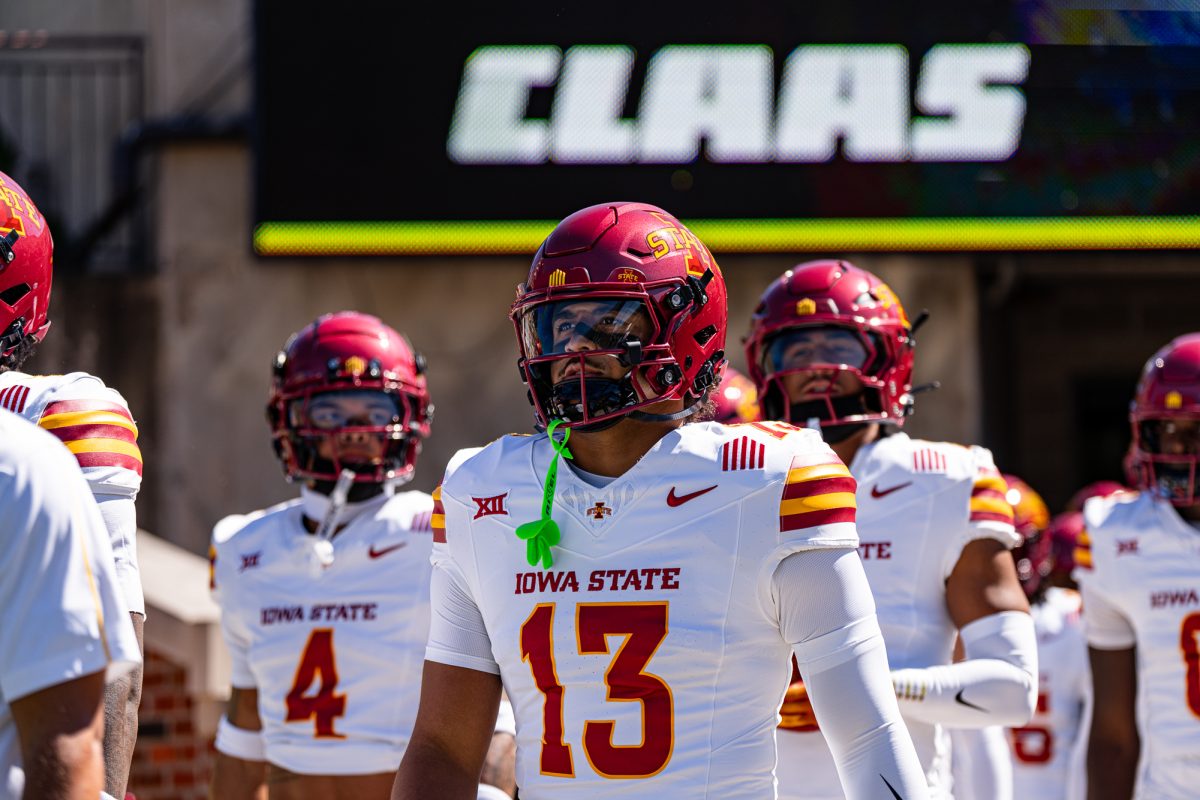Osterhaus: Fighter for life
April 2, 1999
Terry Osterhaus has never been one to ask for help if he could do something by himself.
His friends peg him as strong-willed and stubborn.
“He would never give up on himself,” said friend and roommate Kathy Hugen, junior in exercise and sport science.
In April 1997 during his junior year at Iowa State, Osterhaus was diagnosed with Hodgkin’s disease, a cancer of the lymph nodes.
At first, doctors were optimistic, giving him a 95 percent chance of survival, Osterhaus said. The prognosis preceded the discovery that he had a rare, more life-threatening form of the disease.
Because of his condition, Osterhaus left ISU to undergo six months of chemotherapy treatments at Mary Greeley Medical Center, 1111 Duff Ave.
Though X-rays of the lung where the cancer first was discovered showed the cancer was retreating, doctors later discovered it had spread rampantly to the other lung and heart.
That summer, Osterhaus had worked 50-plus hour weeks at an area grocery store.
He admits he was too weak to work due to his chemo treatments, but because he didn’t want sympathy, he tried to keep his sickness under wraps. During several shifts, Osterhaus stole away to the restroom to vomit due to side effects of the treatment without informing his manager.
“I try to keep my problems to myself,” Osterhaus said. “I always have been that way — I’m stubborn.”
In early October 1997, Osterhaus was transferred to the University of Iowa Hospitals in Iowa City for stronger treatment. He was placed in the cancer ward, but when his condition worsened after three high-dosage chemo treatments, he was transferred to the bone marrow transplant floor.
After the second treatment, Osterhaus said doctors gave him a 5 to 10 percent chance of surviving.
“After the second [treatment I] went through, they pretty much were planning to quit,” he said. “Their final consensus was to leave it up to me.”
Though under the influence of anti-nausea medication, Osterhaus was coherent enough to decide to continue treatment.
“I knew they weren’t giving me much of a chance,” he said.
Internalizing the pain, said Osterhaus, was his method of coping.
“Mentally, if you don’t think it hurts, it will go away,” he said. “It is true, too … You can lie to yourself pretty good. I guess I got good at lying to myself saying it didn’t hurt or it wasn’t that bad.”
During this time, Osterhaus was inundated with cards and visits from family and ISU friends. Hugen recalls visiting him at least once and sometimes twice a week.
Hugen said she tried to rein in her emotions when she was around Osterhaus.
“[Sometimes] he would just be laying there hooked up to a couple of machines. I would go in there and grab ahold of his hands… and I tried not to cry basically because I wasn’t sure if he knew I was there or not,” she said.
Osterhaus’ condition steadily worsened, and at one point, doctors called in Osterhaus’ family and a priest to read him his last rites.
Osterhaus credits one of his nurses for fighting to keep him alive when some doctors didn’t know if a bone marrow transplant was worth it.
“When she feels something, she’s not afraid to voice her opinion,” he said of her.
When given the option of hospice care or continuing treatment, he didn’t tarry in making his decision to continue.
Hospital officials sent out a search for a bone marrow match. After testing the marrow of family members to no avail, a match was located in Germany.
He received the bone marrow transplant on Dec. 12, 1997.
When discussing his donor, a German woman in her mid-40s named Manuela Seidelmann, Osterhaus gets choked up. He describes her as “one of the most loved people in my life.”
“Chances are she’ll never see me, never know me, never know anything about me … and she saved my life,” he said.
And he said he’d be at a loss for words if he ever meets her.
“I don’t know if I could say anything. She saved my life; what do you say to somebody like that?” he asked.
Osterhaus said he hopes to get back into the physical shape he was in prior to his prolonged battle with cancer.
The 6-foot-3-inch Osterhaus weighs nearly 150 pounds — 50 pounds less than he used to weigh.
His condition has rendered him unable to participate in strenuous activity and sports for a couple more years, but he felt good enough to return to ISU this semester. Osterhaus is now a junior majoring in agricultural systems technology.
“It was difficult dropping him off that day he went back to school,” his father David Osterhaus said. Both David and his wife Marilyn, Terry’s mother, spent many sleepless nights in the hospital with their son.
David said he admired his son’s dignity through the tumultuous trial.
“He never complained ‘Why me? I’m so tired of this,'” David said.
During Osterhaus’ stint in the hospital, David had to put his farm in Earlville, Iowa, on the back burner.
“I just couldn’t leave him,” David said. “The farm just became secondary … I did not feel comfortable not being there [with Terry].”
Other family members stepped up to tend the farm in David’s absence, though he didn’t ask them to.
“I’m a little like my son; I don’t like to ask for help,” he said.
Marilyn’s large family developed a prayer circle in which family members would stop all activity at 9 p.m. to pray for Terry.
“I think the many prayers that were said pulled him through this,” Marilyn said. “I’m sure some of them are probably still doing it.”
Was his survival a miracle?
“You could call it a miracle,” Osterhaus said. “But I think the doctors [at University of Iowa Hospitals] are probably the best in the world, too.”






